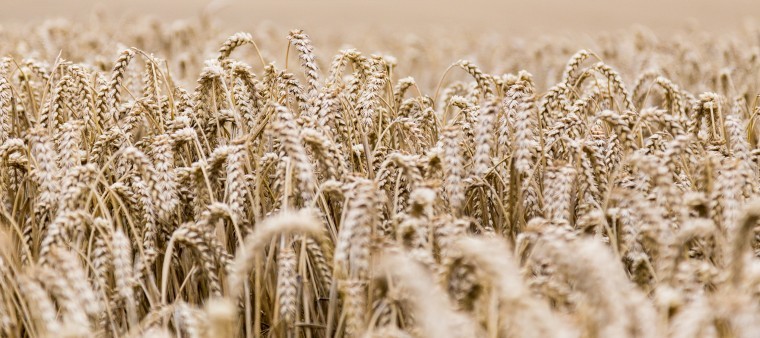At Manor Farm in Surrey, Laurence Matthews said his winter oilseed rape harvest was down a lot on yield but the quality was average to above average.
The winter wheat harvest was the easiest for a number of years with virtually no drying, good bushel weights, good Hagbergs and average to above average yields. “We finished the wheat harvest about two weeks ago and are about to start 150 acres of spring oilseed rape,” Mr Matthews said on 21 August. “We have good prices so all is pretty positive.”
The dry weather had left less grass for the 200 cattle grazing outside, so they had to be fed a bit more than usual for the time of year. “But the grass has come back well and we have plenty of area for them to graze.” All this year’s straw has been baled – rather than chopped and baled – to help other farms short of fodder.
Mr Matthews decided to sow only 30 to 40 acres of maize this year rather than the 200 acres he usually sows – which was lucky, because the heat has made the crop very short. The weather has also delayed the fodder beet harvest from September to early October “with a bit of luck.” The harvest is done to customers’ orders and goes right through the winter until March or April.
For Jeff Powell – who farms in south Oxfordshire and is chairman of the NFU’s Berkshire, Buckinghamshire and Oxfordshire branch – the harvest can be summarised as “prices are up, there are no drying costs and yields are pretty much OK.
“It has been the easiest harvest I have ever known because the dry weather made for easy combining conditions.” Mr Powell’s milling wheat is fairly low input compared to his neighbours, but harvest nonetheless ranged from three to six tonnes to the acre. “My last two harvests were less than that,” Mr Powell added.
He was waiting for a sample of his spring malting barley to be tested, and the crop ranged between 2.5 and three tonnes to the acre. “For a crop which went in on 20 April and had a short growing season which was half wet and half very dry, that is fine.” Last year’s malting barley harvest was spoiled by rain.
Mr Powell said his least impressive crop has been winter beans. “We usually like to see 1.5 tonnes to the acre, but this year was more like 1.4 tonnes.” A lot of grass is grown for hay to make conventional small bales for people who keep horses: with a bit of nitrogen to go with the recent rain, Mr Powell is hoping for some second growth and a small cut in September.
On the Iford Estate near Lewes in East Sussex, manager Ben Taylor grows arable crops – including wheat and barley – on 2,500 acres: the harvest finished on 21 August. “All the crops have achieved better yields compared to our five year average,” Mr Taylor said. “Given that we had a wet spring and dry summer, everything has done pretty well. The harvest was a dream for the first three weeks, but in the last couple of weeks we have been held up by rain.”
Near Andover in Hampshire, Matt Culley said oilseed rape yields were 10% to 12% down on the five year average, the group four feed wheat was running at or slightly above the five year average on about 9.5 tonnes to the hectare, and the spring barley was 20% down at between four and 6.5 tonnes a hectare.
In December, Mr Culley contracted to sell about 40% of his spring barley crop forward on prices at between £150 and £160 a tonne, which seemed good at the time. With the yields 20% down, he has effectively sold 60% forward, leaving him 40% of the crop to try to achieve the better current price of about £200 a tonne. “Harvesting the barley at 20% below average yield will not be a bumper year as prices are concerned,” Mr Culley said.
The expense of growing oilseed rape is making him think about the crop’s future. “Over the last two or three years, rape yields have been the same as they were 15 years ago,” Mr Culley said. “So I am starting to grow forage crops in the rotation for someone with an anaerobic digestion plant.”
In mid Kent, Andy Barr said the harvest has seen a number of firsts. “If you had told me a few months ago that we would be combining oilseed rape at 6.30am to try to reach the 6% moisture content because it was so dry, I would not have believed you,” he said. Combining wheat at 10% moisture was another first.
Some of the wheat did much better than expected, and the spring barley did quite well. “Oilseed rape was pretty disappointing and down by about one tonne a hectare. The winter beans looked very promising and we ended up harvesting them for the first time ever in July. But they had burned up in the hot sun.”




